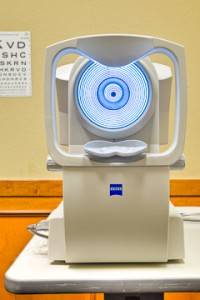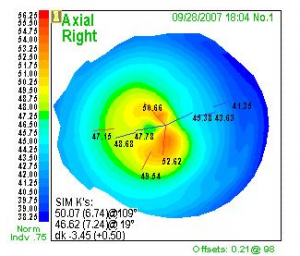
Many eye diseases affect the physical features and shape of the anterior surface of the cornea. These conditions can produce corneal shape anomalies such as irregular astigmatism that result in visual impairment.
Corneal topography is performed with a non-contact instrument called a corneal topographer. These instruments work by projecting light rings onto the cornea and then using a computer to analyze the reflected image.
Important clinical functions of corneal topography include the following
- earlier and more accurate diagnosis of corneal disease
- assist in determining treatment plans
- preoperative surgical risk assessment
- postoperative surgical management
Corneal topography may be reasonable and medically necessary in the following clinical situations
- corneal ulcers
- keratoconus
- corneal edema
- corneal dystrophy
- corneal degeneration
- pterygium causing irregular astigmatism
- contact lens-induced corneal warpage
- monocular diplopia
- unexplained vision loss thought to be due to irregular astigmatism




